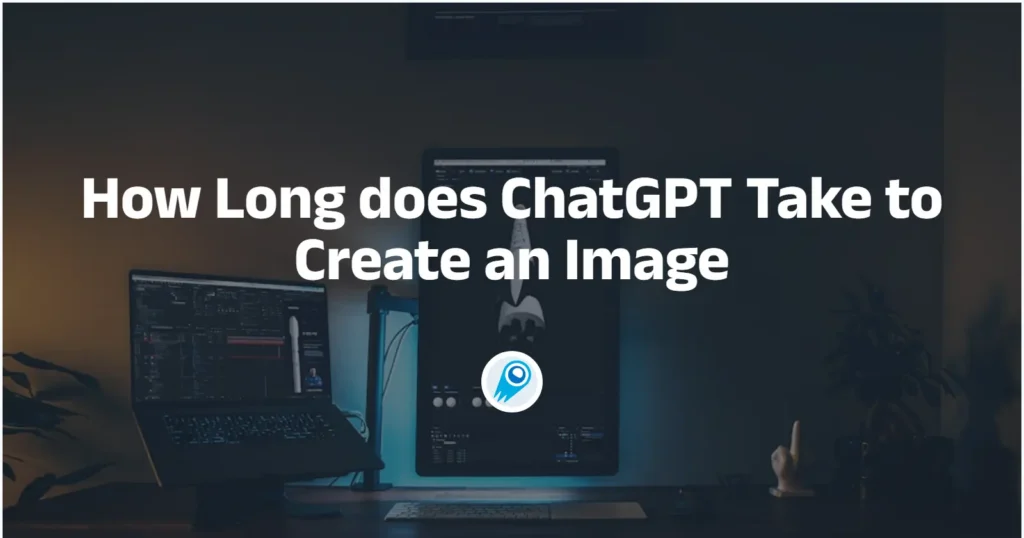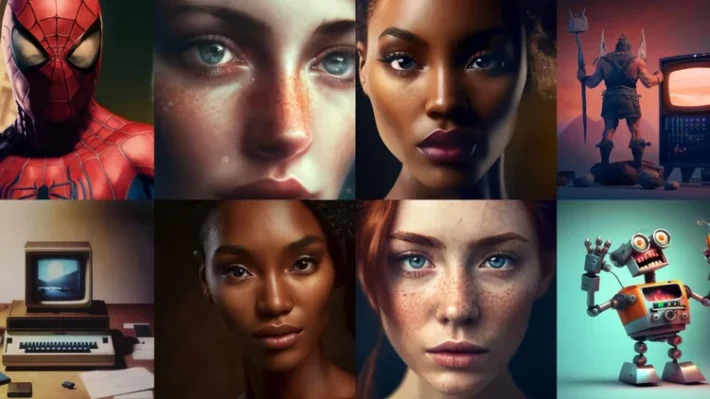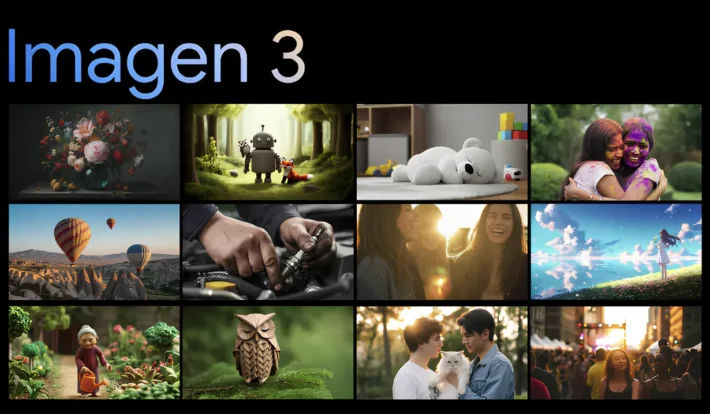How Long does ChatGPT Take to Create an Image

Artificial image generation is one of the fastest-moving features in generative AI today. Developers and creators routinely ask the same practical question: “how long will ChatGPT take to get my image?” The simple answer is: it depends — on the model you use, the API or UI path, image size/quality, concurrent load at the provider, moderation and safety checks, and network/implementation choices. Below I unpack those variables, summarize what the major chatgpt image models typically deliver in (real-world) latency ranges, explain what causes slowdowns, show practical code patterns to manage latency.
Short summary: image generation can be as fast as a few seconds for a small, low-quality request, but for high-quality or complex images (and depending on load and moderation) expect 10–90+ seconds; some users and reports have seen waits up to ~2 minutes and occasional timeouts under heavy load.
ChatGPT AI Image Generation Speed by Model (gpt-image-1, dall-e-3, gpt-4o)
Note: measured times vary by prompt, region, API options, account type, and momentary service load. The table below synthesizes official guidance, community reports and independent tests. Use it as a planning guideline — not an SLA.
| Model | Typical simple prompt (seconds) | Typical complex prompt (seconds) | Notes |
|---|---|---|---|
| gpt-image-1(OpenAI Image API) | 2–10s | 8–25s | Newer model optimized for speed + fidelity; used in ChatGPT’s latest generator and integrated into Adobe/Figma. |
| DALL·E 3(API / Chat UI) | 8–18s | 20–45s | quality parameter: standard is faster; hd increases latency and cost. Some users report higher latencies during heavy load. |
| GPT-4o image(ChatGPT “Images in ChatGPT”) | 4–12s | 10–30s | Advertised as faster than earlier GPT-4 Turbo for many multimodal requests; performance can be very good on short prompts. |
Key takeaway: expect seconds for simple/lower-quality jobs and tens of seconds (up to ~1 minute) for highest-quality or heavily detailed images generated by GPT-4o. Benchmarks from independent observers show consistent model-and-prompt-dependent differences.
Why numbers vary so much
- Model architecture & strategy: GPT-4o uses a different, more resource-intensive generation process (autoregressive + image decoder) than some older diffusion-based pipelines; more compute = longer times for higher fidelity.
- Requested size/quality: 1024×1024 or higher + “photorealistic” + detailed scene = more compute and time. DALL·E 3 was trained for 1024 sizes by default; smaller sizes may be faster or require a different model.
- Prompt complexity / number of objects / text rendering: models spend more inference time when the prompt includes many distinct objects, text labels, or tight layout constraints.
- Server load & rate limiting: generation times expand during peak usage; community threads and OpenAI status notes show that some users see tens of seconds to minutes during busy windows.
What affects ChatGPT image generation time?
Model architecture and compute cost
Different models use different generation methods and compute footprints:
- gpt-image-1 — OpenAI’s newer multimodal image model; designed for faster, high-fidelity generation and editing workflows. It’s the model behind more recent ChatGPT image features and has been integrated into third-party tools (Adobe, Figma). Because it’s newer and optimized for production, many users report it being relatively fast in normal conditions.
- DALL·E 3 — the previous-generation, diffusion-based high-detail model. It supports
qualityoptions that trade time/cost for fidelity (e.g.,standardvshd), so when you ask for higher-quality output it will intentionally take longer. The DALL·E 3 documentation explicitly notesqualityaffects generation time. - GPT-4o (image capability) — advertised as faster than previous GPT-4 variants for multimodal workloads; OpenAI positions GPT-4o as both faster and more cost-efficient than GPT-4 Turbo for many tasks, and it is used for ChatGPT’s integrated image generator. In practice GPT-4o can be quicker at certain prompt types, especially when the model’s instruction-following and multimodal caching apply.
Prompt complexity
Long, object-dense prompts with constraints (e.g., “16 distinct labeled objects, photorealistic lighting, exact font”) require the model to resolve more relationships during decoding — that increases compute and time. Multi-turn refinements (edit cycles) add cumulative time.
Image size, quality and options
Higher resolution and quality: "hd" increase generation time. DALL·E 3’s docs call this out: quality lets you choose standard (faster) or hd (slower). ([OpenAI Help Center][2])
Concurrent demand & service load
- During peak demand (major feature launches, viral prompts) OpenAI’s image services have been rate-limited or slowed to maintain reliability. Public reporting and OpenAI posts show the service experienced very high demand at launch of the newer generator (OpenAI noted extremely high load).
Account tier and rate limits
Free-tier users face stricter rate limits and lower priority during contention; paid tiers get higher rate limits and priority that can reduce effective wait time. I summarize common practical limits later.
Model architecture matters
- Diffusion-style approaches (DALL·E family historically) tend to have predictable pipelines; quality knobs and sampling steps affect time.
- Autoregressive image approaches (OpenAI’s GPT-4o image pipeline / gpt-image-1 derivatives) may prioritize fidelity and context understanding (including text-in-image), but can cost more compute/time; this was one factor OpenAI highlighted when announcing GPT-4o image generation.
How can you make ChatGPT image generation faster?
Here are practical optimizations (with code examples below).
1) Choose the right model for the job
- Use gpt-image-1 for high-throughput or simple images.
- Use DALL·E 3 when you need better layout/text rendering but can accept slightly slower times.
- Use GPT-4o when you need the highest fidelity, in-context coherence, or multi-step editing — accept that it will often be slower.
2) Reduce resolution / quality when acceptable
Request 512×512 or use a quality flag if supported; generate a smaller draft first and upscale only the chosen result.
3) Batch or pipeline
- Batch prompts where the API supports it (generate multiple variants per request) rather than many single requests.
- Use a two-pass pipeline: draft at low quality quickly, then submit selected drafts to high-quality/upsampling.
If you need multiple distinct images, send parallel requests (respecting your rate limits). Example (Node.js):
// send 4 independent calls in parallel
await Promise.all(prompts.map(p => openai.images.generate({model:"gpt-image-1", prompt:p})));Parallelizing converts long serial time into concurrent wall-clock time — be mindful of per-account rate limits.
4) Cache & reuse
Cache images for frequently asked prompts (or identical seeds) and reuse them. For multi-turn edits, prefer param edits to full regenerations where possible.
5) Prompt engineering
Simplify prompts where possible. Ask the model for “a simple placeholder version” and then refine only the chosen candidate.
Code examples — how to generate images and speed-tune requests
CometAPI is a unified multi-model gateway that exposes hundreds of models through one API surface. If you want to test or run Gemini models without managing multiple provider integrations (and to enable quick model switching in prod), CometAPI can be a good abstraction layer. CometAPI which speaks an OpenAI-compatible dialect and provide DALL-E 3 API ,GPT-image-1 API, GPT-4o-image API. Moreover, the call price is 20% off the official price
Below are concise, practical examples. You just need to log in to cometapi and get the key in your personal panel. New users will get a free key. These are illustrative — check your gpt 4o/gpt-image-1 docs for exact method names and parameters.
Note: replace
process.env.OPENAI_API_KEYwith your CometAPI key and verify model names in the platform you use.
Example A — Node.js: gpt-image-1 (fast throughput)
// Node.js (example, adjust for your OpenAI SDK)
import OpenAI from "openai";
const openai = new OpenAI({ apiKey: process.env.OPENAI_API_KEY });
async function createImageFast() {
const resp = await openai.images.generate({
model: "gpt-image-1",
prompt: "Minimalistic icon-style illustration of a green rocket on white background",
size: "512x512", // smaller size = faster
quality: "low", // if supported, lower quality is faster
n: 4 // generate 4 variants in one request (batch)
});
// resp.data contains image bytes/urls depending on SDK
console.log("Generated", resp.data.length, "images");
}
createImageFast().catch(console.error);
Example B — Python: DALL·E 3 (balanced quality)
# Python (example)
from openai import OpenAI
client = OpenAI(api_key="YOUR_KEY")
def generate_dalle3():
resp = client.images.generate(
model="dall-e-3",
prompt="A cinematic, photoreal portrait of an elderly sailor, golden hour lighting, detailed wrinkles",
size="1024x1024", # higher res = slower
quality="standard", # choose lower quality for speed if available
n=1
)
# Save or handle resp.data[0].b64_json or URL
print("Done:", resp.data[0]["url"])
generate_dalle3()
Example C — Node.js: GPT-4o image generation (high fidelity with expected longer time)
// Node.js example for gpt-4o image generation
import OpenAI from "openai";
const openai = new OpenAI({ apiKey: process.env.OPENAI_API_KEY });
async function createHighFidelity() {
const resp = await openai.images.generate({
model: "gpt-4o", // multimodal model (may be slower)
prompt: "Design a clean infographic explaining electric vehicle charging levels, legible labels",
size: "1792x1024", // larger aspect to get readable text
quality: "high",
n: 1
});
console.log("Image ready; note: this may take longer (tens of seconds).");
}
createHighFidelity().catch(console.error);
Practical tips in code
- Lower
n(number of images) to reduce total time. - Request lower
sizefor drafts and upsample later. - Use retries with backoff on HTTP 429/5xx to handle transient throttles.
- Measure and log server response times to track when you hit slow windows.
## How can I measure image generation time in my app?
Basic client-side timer (JavaScript):
import OpenAI from "openai";
const openai = new OpenAI({ apiKey: process.env.CometAPI_API_KEY });
async function measure(model, prompt) {
const t0 = Date.now();
const res = await openai.images.generate({
model, prompt, size: "1024x1024", quality: "standard" // model-dependent
});
const t1 = Date.now();
console.log(`Model ${model} took ${(t1 - t0)/1000}s`);
return res;
}This measures round-trip latency (client network + server processing). For server-only measurement, run the same code from your cloud compute region closest to OpenAI’s endpoints.
(These are example calls modeled on OpenAI’s Images/GPT Image API patterns — adjust model, size, and quality to match the model you want.
FAQ: ChatGPT image generation time
Q: Should I retry on timeouts or long waits?
A: Use exponential backoff with jitter for retries on 429/5xx errors. For very long-running jobs, consider asynchronous design: generate drafts, queue high-quality render jobs, and inform users of progress.
Q: Is there a hard SLA for generation time?
A: Not publicly for consumer ChatGPT image generation. OpenAI documents model behavior (e.g., GPT-4o can take up to ~1 minute), but wall-clock times vary with load and account limits.
Q: Can I preemptively speed up generation by asking for “simple” images?
A: Yes — simpler prompts, smaller resolution, lower quality and fewer images per request all reduce time.
Can I get a progress feed while the image is generating?”
Some APIs offer job IDs and polling endpoints; some UI integrations stream intermediate thumbnails or status updates. If you need a progress UX, design for polling (with sensible intervals) or provide placeholders while the image computes.
Final thoughts
Image generation is evolving quickly. Recent model releases (GPT-4o’s integrated image generation) emphasize fidelity, instruction following, and multi-turn coherence — improvements that often increase per-image compute and hence latency (OpenAI notes generation can take up to a minute). Independent benchmarks and user community reports confirm variability: faster models exist for throughput, but the flagship multimodal models trade speed for precision. If you need predictable low latency for production workloads, design your pipeline with drafts, caching, smaller sizes, and quota planning.
Getting Started
CometAPI is a unified API platform that aggregates over 500 AI models from leading providers—such as OpenAI’s GPT series, Google’s Gemini, Anthropic’s Claude, Midjourney, Suno, and more—into a single, developer-friendly interface. By offering consistent authentication, request formatting, and response handling, CometAPI dramatically simplifies the integration of AI capabilities into your applications. Whether you’re building chatbots, image generators, music composers, or data‐driven analytics pipelines, CometAPI lets you iterate faster, control costs, and remain vendor-agnostic—all while tapping into the latest breakthroughs across the AI ecosystem.
To begin, explore the chatgpt model’s capabilities in the Playground and consult the API guide for detailed instructions. Before accessing, please make sure you have logged in to CometAPI and obtained the API key. CometAPI offer a price far lower than the official price to help you integrate.



